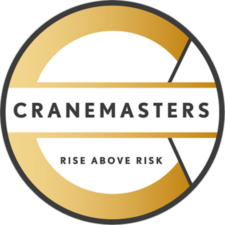Date
Oct 10, 2024
Time
08:30 - 12:30 PM PDT
Session Format
Workshop
Info

In this hands-on Cranemasters workshop for supervisors and safety professionals, learn the essentials to select and maintain rigging equipment and keep workers safe.
Topics include:
Integrity
- How do I know if this manufactured piece of rigging equipment can be relied on to lift this load?
- How do I check the integrity of this product?
- If unsure or in doubt, what do most riggers do?
Knowledge
- Load handling activities are subject to hazards that cannot always be identified solely through planning. Only by the application of knowledge, care, common sense and experience, can safe load handling activities be anticipated. It is therefore essential that personnel responsible for the planning and implementation of load handling activities are competent, qualified, and trained with the skills to accomplish their assigned tasks.
Questioning Attitude
- To identify discrepancies that may result in error or inappropriate action, individuals must avoid complacency and continuously challenge existing conditions and activities. For example, questioning temperature ranges of a shackle. What angles can I use a shackle at? Can I use a shackle to make a choke hitch, and if not, why?
Regulatory Considerations
How do you make workers aware of:
- Responsibilities and duties under the OHS code
- Company and prime contractor’s policies and procedures
- Manufacturer’s specifications with regards to hoisting and rigging. The reason the rigging industry is in a gray or unsure state is because both management and the workers are not following the appropriate specifications.
Company Support
- The rigging industry can have a perception that seasoned riggers and crane operators are always right. What can we do for the industry to make challenging a decision easier and be considered a positive attribute instead of a negative one? The answer is energy, passion, and results. If I challenge someone and ask, “What percentage does your sling de-rate in the rain or wet environments?” and they answer, “It doesn’t”... then how do we proceed?
Audience


